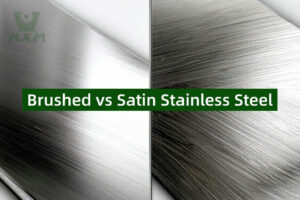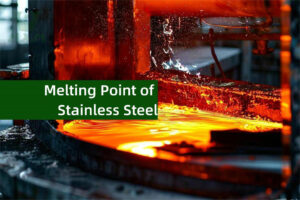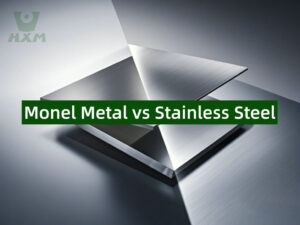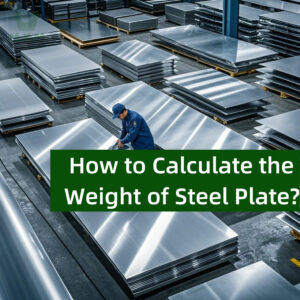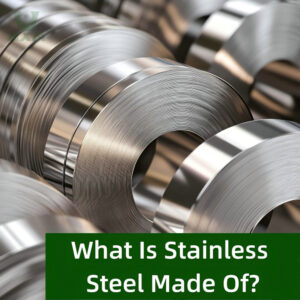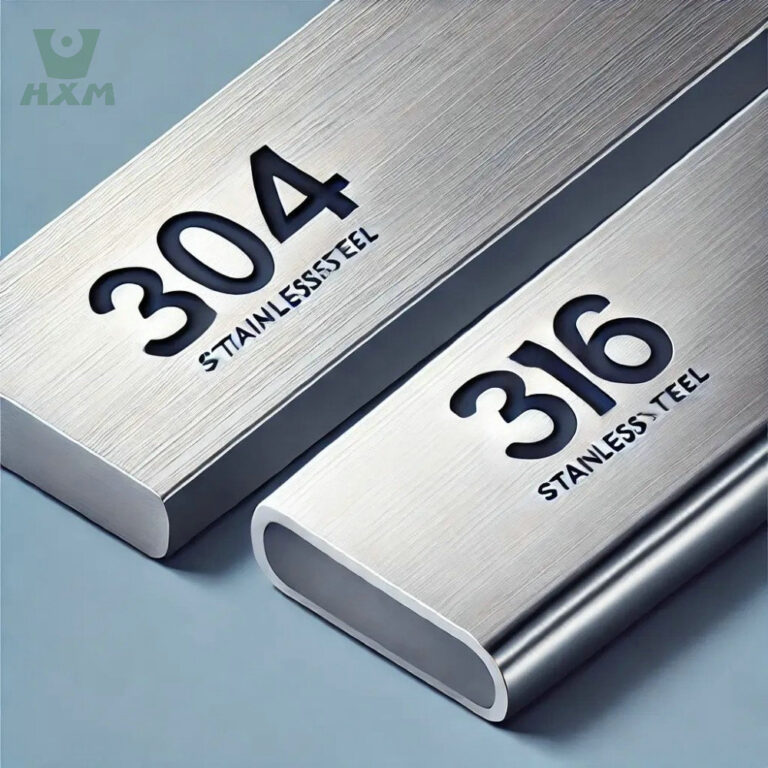
When it comes to choosing between 304 and 316 stainless steel, the decision often hinges on the specific application and environmental conditions. Both alloys are part of the austenitic stainless steel family, known for their excellent corrosion resistance, durability, and versatility. However, there are key differences that make each type suitable for different uses. In this article, we’ll explore the properties, advantages, and typical applications of 304 and 316 stainless steel to help you determine which is better for your needs.
304 vs 316 Stainless Steel: Composition and Key Differences
304 Stainless Steel
Composition: 18% chromium, 8% nickel, and up to 0.08% carbon.
Properties: Excellent corrosion resistance, good formability, and weldability.
Common Name: “18/8 stainless steel” due to its chromium and nickel content.
316 Stainless Steel
Composition: 16% chromium, 10% nickel, 2% molybdenum, and up to 0.08% carbon.
Properties: Superior corrosion resistance, especially against chlorides and acids, due to the addition of molybdenum.
Common Name: “Marine-grade stainless steel” because of its resistance to saltwater corrosion.
| Feature | 304 Stainless Steel | 316 Stainless Steel |
|---|---|---|
| Chromium (Cr) | 18-20% | 16-18% |
| Nickel (Ni) | 8-10.5% | 10-14% |
| Molybdenum (Mo) | None | 2-3% |
| Corrosion Resistance | Good, but less resistant to chloride and acidic environments | Superior, especially in marine and chemical exposure |
| Magnetism | Non-magnetic (may become slightly magnetic after cold working) | Non-magnetic (may become slightly magnetic after cold working) |
| Strength & Hardness | Good mechanical strength | Slightly higher strength and hardness |
| Cost | More affordable | More expensive due to molybdenum content |
| Common Applications | Kitchenware, food processing, sinks, construction | Marine, chemical processing, medical implants, pharmaceuticals |
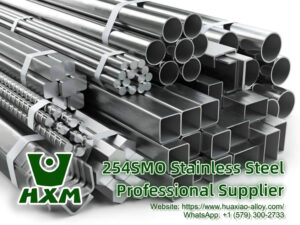
Huaxiao-Alloy: Premium 254SMO stainless steel manufacturer offering sheets, tubes, bars, and custom solutions. Explore specs, applications, and FAQs.
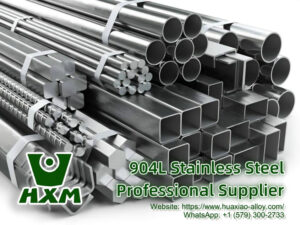
Huaxiao-Alloy: Premium 904L stainless steel manufacturer offering sheets, tubes, bars, and custom solutions. Explore specs, applications, and FAQs.
304 vs 316 Stainless Steel: Corrosion Resistance
304 Stainless Steel
General Use: Highly resistant to corrosion in most environments, including freshwater, mild acids, and alkalis.
Limitations: Vulnerable to chloride-induced corrosion, such as in coastal or de-icing salt environments.
316 Stainless Steel
Superior Resistance: The addition of molybdenum enhances its resistance to chlorides, acids, and industrial chemicals.
Ideal For: Marine environments, chemical processing, and coastal applications where exposure to salt is a concern.
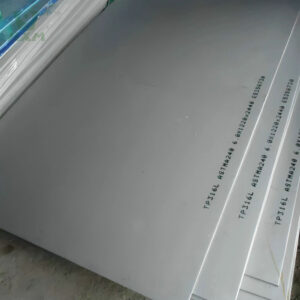
316 / 316L Stainless Steel Sheet&Plate
Huaxiao Alloy is a professional stainless steel supplier, specializing in high-quality stainless steel sheets and plates for global industries. Our TP316 / 316L stainless steel sheets and plates are manufactured to international standards, ensuring excellent corrosion resistance, durability, and reliability for demanding applications.
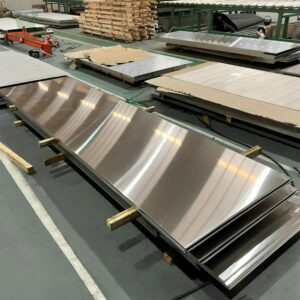
304 / 304L Stainless Steel Sheet&Plate
Huaxiao Alloy is a professional stainless steel supplier dedicated to providing high-quality materials for global industries. Our 304 / 304L stainless steel sheets and plates are manufactured to meet international standards, ensuring superior performance in various applications.
304 vs 316 Stainless Steel: Strength and Durability
304 Stainless Steel
Strength: Good mechanical strength and durability for most applications.
Temperature Resistance: Performs well in high-temperature environments up to 870°C (1600°F).
316 Stainless Steel
Strength: Slightly stronger than 304 due to the molybdenum content.
Temperature Resistance: Can withstand higher temperatures and is more resistant to scaling and oxidation.
304 vs 316 Stainless Steel: Cost Considerations
304 Stainless Steel
Cost-Effective: Generally less expensive than 316 due to its simpler composition.
Best For: Applications where extreme corrosion resistance is not required.
316 Stainless Steel
Higher Cost: More expensive due to the addition of molybdenum and higher nickel content.
Best For: Specialized applications where superior corrosion resistance is critical.
304 vs 316 Stainless Steel: Common Applications
304 Stainless Steel
Kitchen Equipment: Sinks, countertops, and appliances.
Architectural Uses: Trim, handrails, and decorative panels.
Industrial Equipment: Tanks, piping, and machinery parts.
316 Stainless Steel
Marine Applications: Boat fittings, offshore platforms, and desalination plants.
Medical Devices: Surgical instruments and implants.
Chemical Processing: Tanks, valves, and piping for corrosive chemicals.
Which is Better: 304 or 316?
The choice between 304 and 316 stainless steel depends on your specific needs:
Choose 304 if:
Your application involves general-purpose use.
You need a cost-effective solution with good corrosion resistance.
The environment is not highly corrosive (e.g., no exposure to chlorides or acids).
Choose 316 if:
Your application involves exposure to chlorides, acids, or harsh chemicals.
You require superior corrosion resistance for marine or industrial environments.
Budget is not the primary concern.
Why Choose Huaxiao Alloy?
Both 304 and 316 stainless steel are excellent materials with unique properties. While 304 is more cost-effective and suitable for general use, 316 offers enhanced corrosion resistance, making it ideal for demanding environments. By understanding the differences and evaluating your specific requirements, you can make an informed decision on which stainless steel is better for your project.
Huaxiao Alloy is a professional supplier of various grades of stainless steel products, offering the highest quality materials at the most competitive prices. Whether you need 304 or 316 stainless steel, Huaxiao Alloy provides reliable solutions tailored to your needs. Contact us today to learn more about our products and services.

316 / 316L Stainless Steel Sheet&Plate
Huaxiao Alloy is a professional stainless steel supplier, specializing in high-quality stainless steel sheets and plates for global industries. Our TP316 / 316L stainless steel sheets and plates are manufactured to international standards, ensuring excellent corrosion resistance, durability, and reliability for demanding applications.

304 / 304L Stainless Steel Sheet&Plate
Huaxiao Alloy is a professional stainless steel supplier dedicated to providing high-quality materials for global industries. Our 304 / 304L stainless steel sheets and plates are manufactured to meet international standards, ensuring superior performance in various applications.
Both are food-grade, but 316 is better for highly acidic or salty environments due to its molybdenum content, which enhances corrosion resistance.
- Higher cost than 304
- Lower strength compared to some stainless steels
- Slightly less formable due to molybdenum content
No, 316 stainless steel is non-magnetic in its annealed state, though cold working can induce slight magnetism.
304 has good corrosion resistance, but it can rust in harsh environments, especially in chloride-rich or marine conditions.
Yes, 304 stainless steel is safe for drinking water and commonly used in pipes and tanks for potable water systems.
- Lower chloride resistance (compared to 316)
- Susceptible to pitting and crevice corrosion in marine or chemical environments
- Not as strong as some high-strength alloys
Yes, 304 is water-resistant, but prolonged exposure to chlorinated water may cause slight corrosion over time.
With proper care, 304 stainless can last decades, but its longevity depends on the environment and exposure to corrosive elements.

